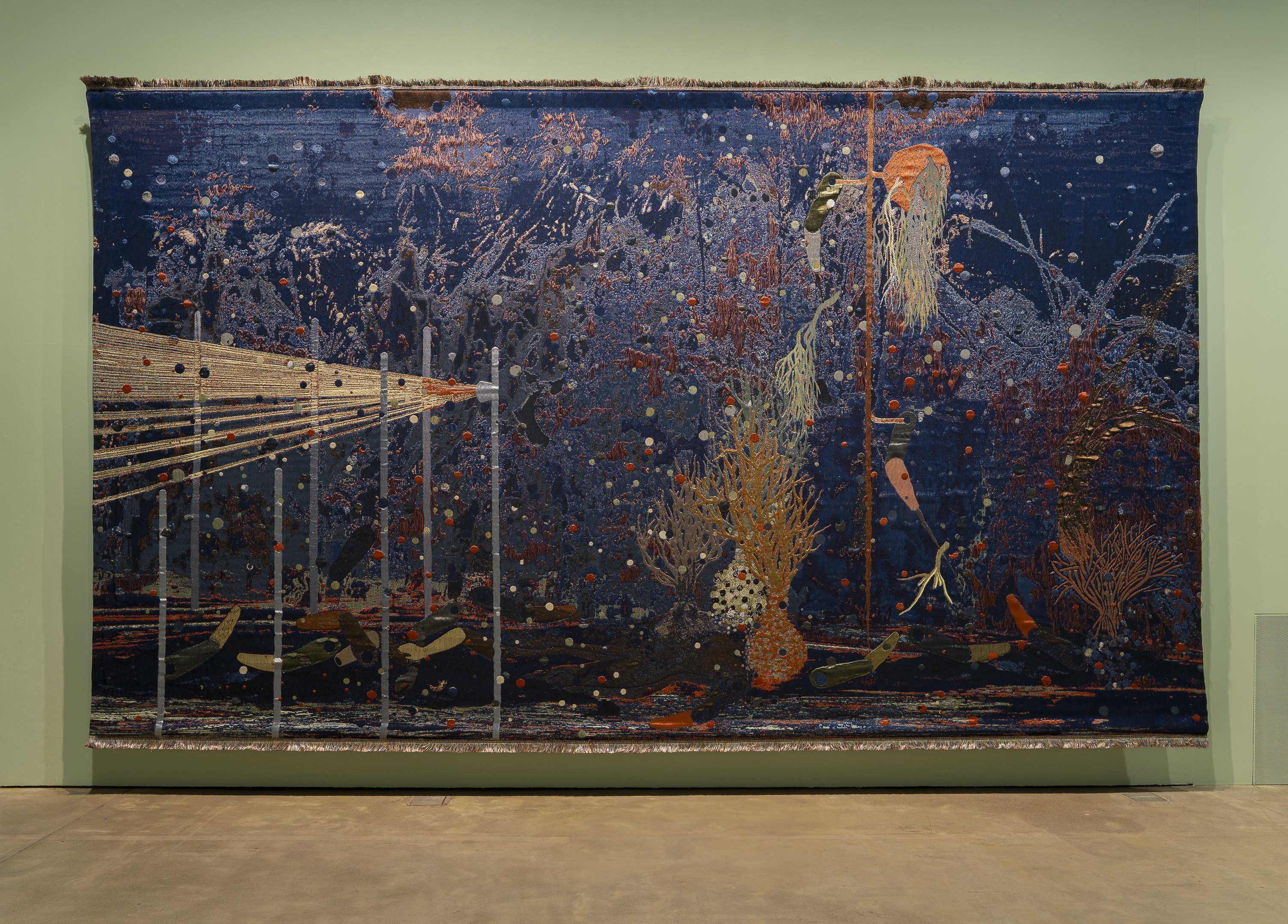Otobong Nkanga (b. 1974) is a Nigerian-born multidisciplinary artist based in Belgium. Her art explores relationship between humans and land, delving into themes such as ownership and control of land resources and the impact of geography on identity formation. These themes are often intertwined in her practice.
Emulating maps and topographical strata, Nkanga’s installations invite us to reflect on the complex webs of interaction that exist between culture, identity formation, and the ecological violence of mineral extraction – and on how everything ultimately links back to land, on which we all depend.
Nkanga uses combinations of drawing, painting, sculpture, performance, photography, video, tapestry, poetry and pedagogical approaches in her practice.
Photo: Wim van Dongen

Otobong Nkanga: Tied to the Other Side, 2021. Helsinki Biennial 8.6.–21.9.2025, HAM Helsinki Art Museum. Photo: HAM / Helsinki Biennial / Sonja Hyytiäinen
Tied to the Other Side, 2021
Artwork location: HAM Helsinki Art Museum
Tied to the Other Side displayed in HAM’s south gallery is a tapestry of abstracted plants, corals and human limbs floating in a landscape in which the universal narrative of life, death and rebirth unfurls. The artist describes the fragmented limbs as invoking the many human lives lost in perilous sea crossings both in the past and present. In the circle of life also the human is transformed into something beyond-the-human. The needle-shaped structure piercing the right side of the artwork represents machines, human society and systems by which land and sea resources are exploited. The light-radiating cluster of levelling rods on the left represents an unknown future.
Nkanga’s artwork raises questions about the ownership of marine resources and the Rights of Water. The artist compares the depths of the sea to the deep time of geology, reminding us of our shared obligation to minimize human impacts on global ecosystems, while also intoning the message that the benefits of modern economic prosperity have not been distributed fairly between the Global South and North.
Made in collaboration with the Tilburg Textile Museum, the giant tapestry employs a variety of weaving techniques and one hundred and forty different colours of thread.